
Norway - Norsk Jernbanemuseum Hamar, Norwegian Railways Museum in Hamar
For a full scale picture, please click on the picture shown !
Norsk Jernbanemuseum Hamar, Norwegian Railways Museum in Hamar
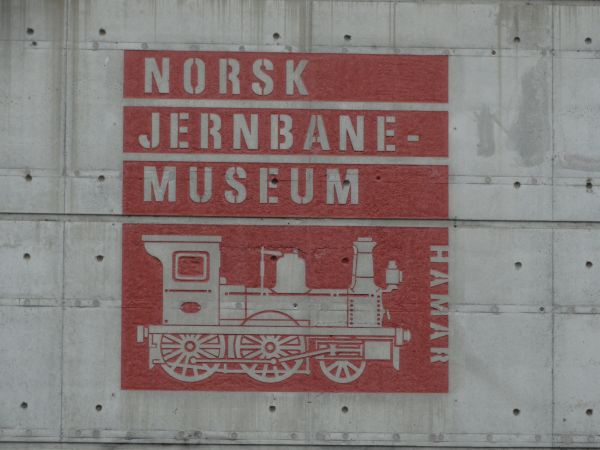
Norway's national railways museum, Norsk Jernbanemuseum, is in the city of Hamar.
The place is somewhat different from other similar museums in that it is an area which extends to an area of almost
a kilometer long. There is an operational old narrow gauge train that takes museum visitors from one end to another
and there are several old station houses moved into the area from all over Norway. Our first picture shows the
logo of the museum.
Picture 1.7.2016 by Ilkka Siissalo.

There is an operating narrow gauge train on the area of the national railway museum in Hamar. It runs according to a published
timetable and takes museum visitors from one end of the museum area to the other. Its name is Tertittoget.
Picture from Hamar 1.7.2016 by Ilkka Siissalo.
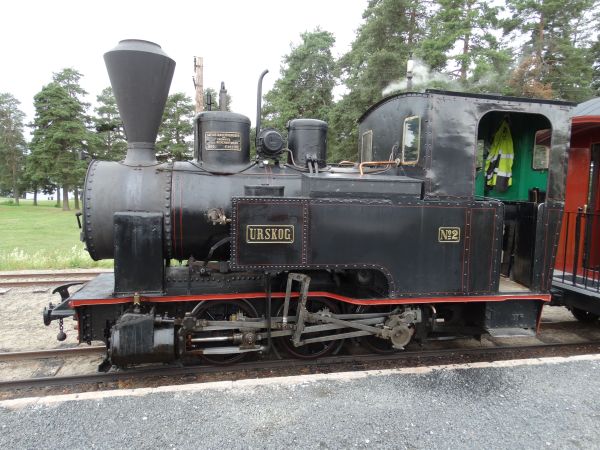
The locomotive of Tertittoget has been built by Hartmann in Chemnitz, Germany in 1895. It has been used at the museum since
already 1962. The small locomotive together with its second and third class coaches are from the Urskog-Høland line.
The small locomotive is fired with wood pellets.
Picture from Hamar 1.7.2016 by Ilkka Siissalo.
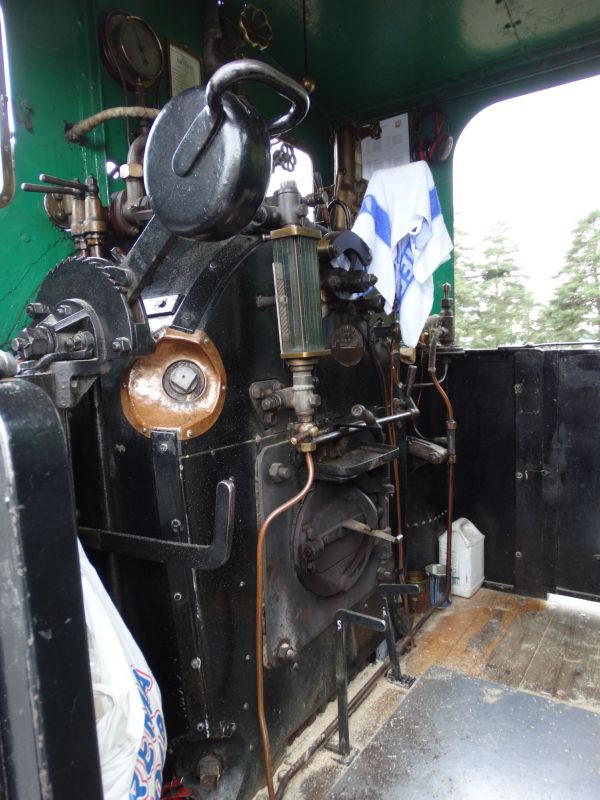
1890s technology for driving a train, still going strong. The controls of Tertittogets locomotive.
Picture from Hamar 1.7.2016 by Ilkka Siissalo.
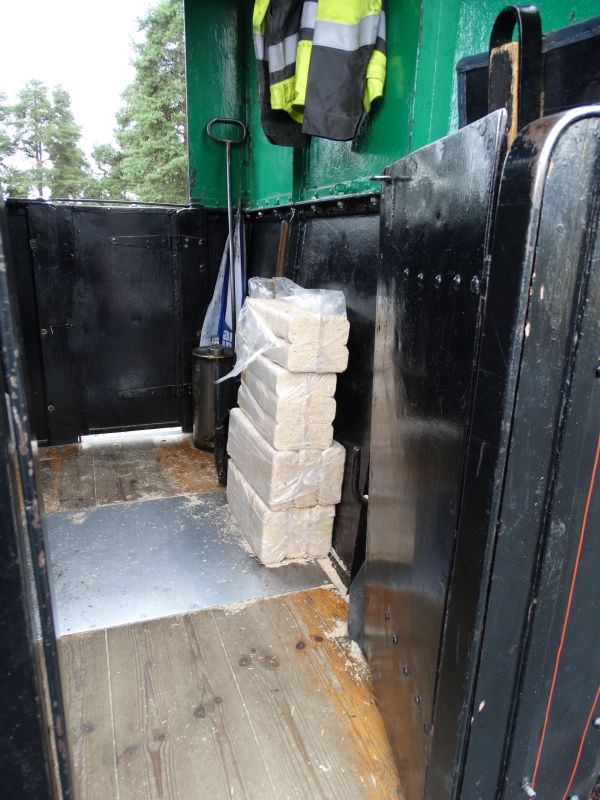
Fuel for Tertittoget. For those of you who have had a hamster, guinea pig or a rabbit as kids, you surely know the stuff.
But not necessarily as locomotive fuel :-)
Picture from Hamar 1.7.2016 by Ilkka Siissalo.
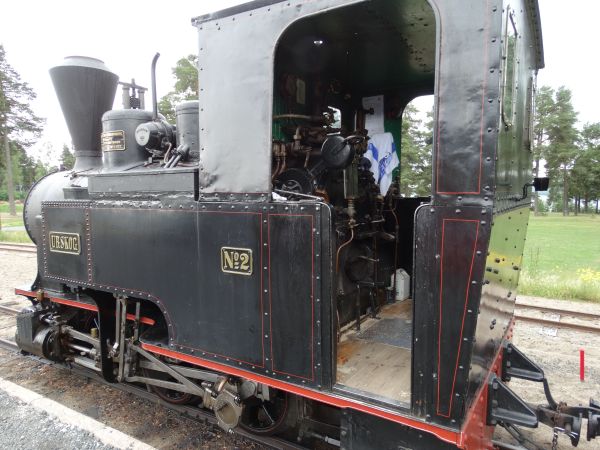
Well over 120 years old and during summers in almost daily use since 1962, the machine of Tertittoget is in surprisingly good condition.
Picture from Hamar 1.7.2016 by Ilkka Siissalo.
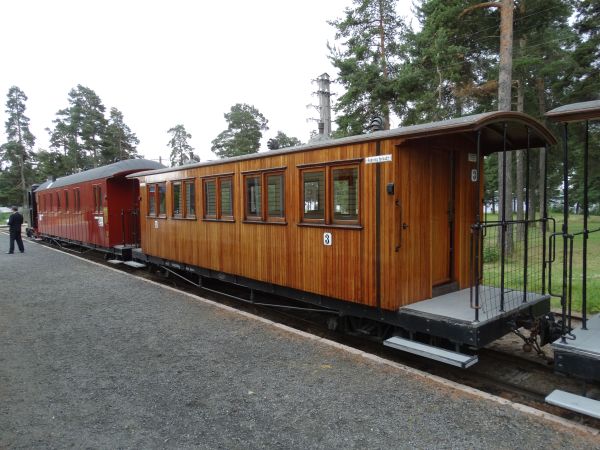
Two of the three coaches of the museum train Tertittoget.
Picture from Hamar 1.7.2016 by Ilkka Siissalo.
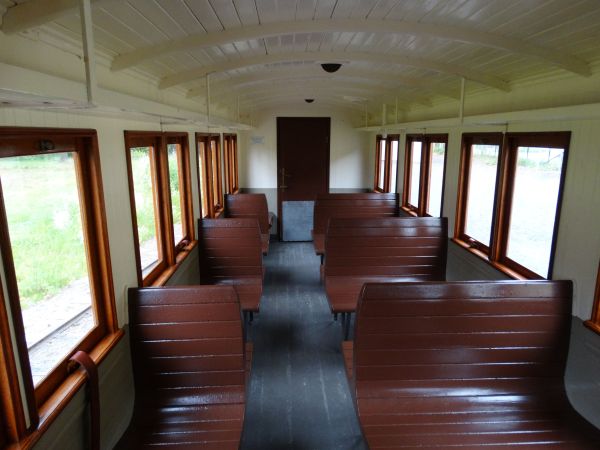
Inside a third class coach of Tertittoget.
Picture from Hamar 1.7.2016 by Ilkka Siissalo.
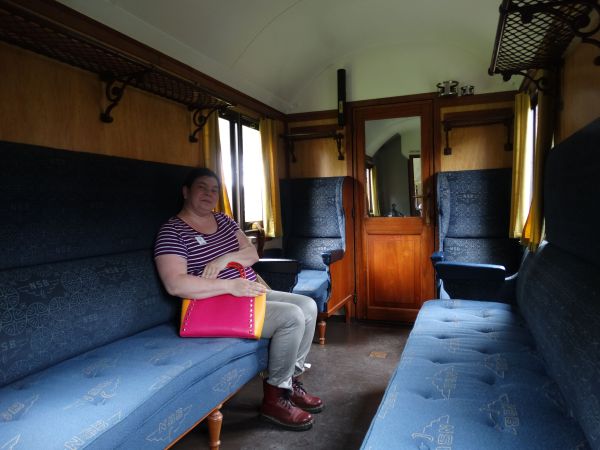
The absolute luxury of a 2nd class coach of Tertittoget. The lady in the picture is train photographer Sanna Siissalo.
Picture from Hamar 1.7.2016 by Ilkka Siissalo.
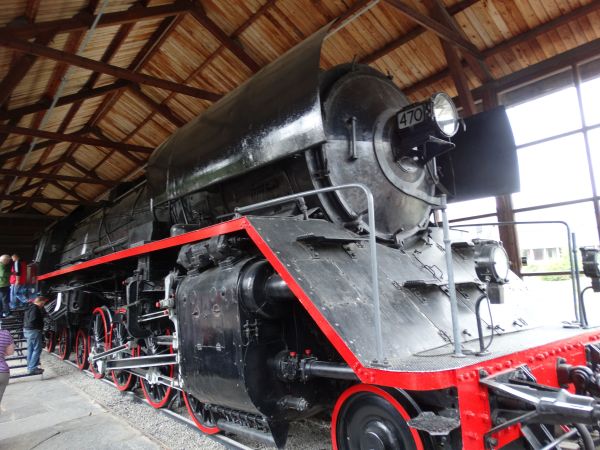
The "Dovregubben", old chap of Dovre, is the biggest ever Norwegian steam locomotive, designed for the very steep mountainous
Dovrebane rail line. It weighs over 153 tons. Five of these giants were built since 1935 by the Thune mekaniske vaerksted in Oslo and
when the Germans occupied Norway, the nazis built two more in Germany by Krupp in 1940. This one is one of the German built Krupp
machines. The machines were withdrawn 1957-58.
Picture from Hamar 1.7.2016 by Ilkka Siissalo.

Driving wheels of the "Dovregubben", class 49c, were 1530 mm in diameter.
Picture from Hamar 1.7.2016 by Ilkka Siissalo.
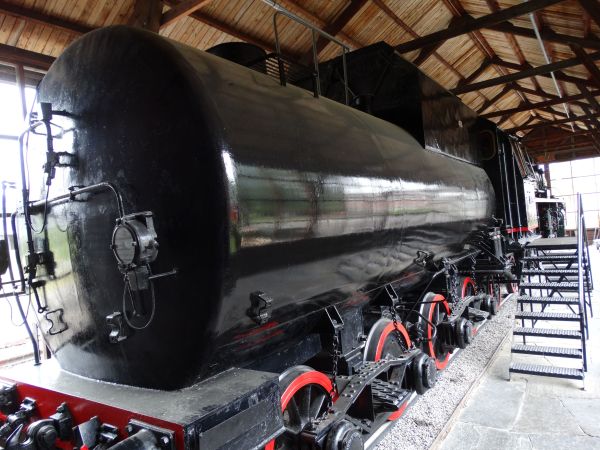
The "Dovregubben" was oil fueled and even the oil tenders were huge.
Picture from Hamar 1.7.2016 by Ilkka Siissalo.
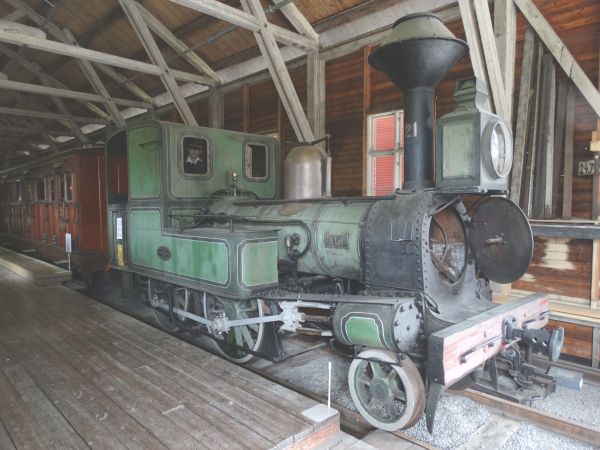
"Alf" was one of the earliest locomotives in Norway, built by Beyer, Peacock & co. in Manchester Britain 1870.
Picture from Hamar 1.7.2016 by Ilkka Siissalo.
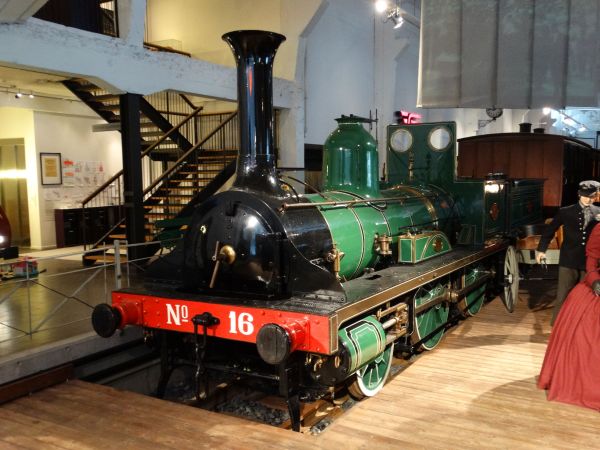
Even older than "Alf" shown above was this locomotive no. 16 built by the world famous company R.t. Stephenson & co.
in Newcastle on Tyne in UK in 1861.
Picture from Hamar 1.7.2016 by Ilkka Siissalo.
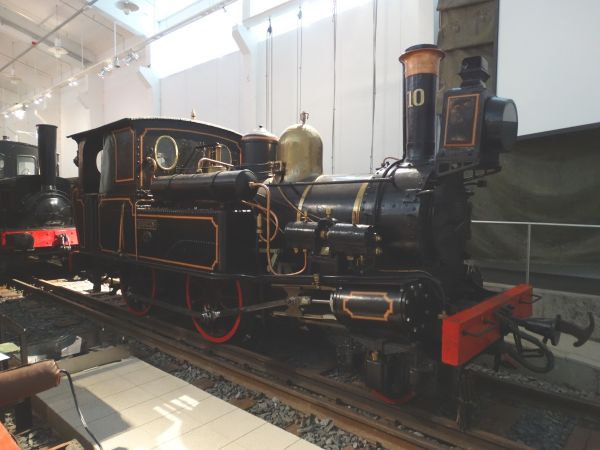
Locomotive no. 10 "Hugin" was built in Motala Sweden 1881 and it was in use in Bergen area and Stavanger area
until 1948.
Picture from Hamar 1.7.2016 by Ilkka Siissalo.
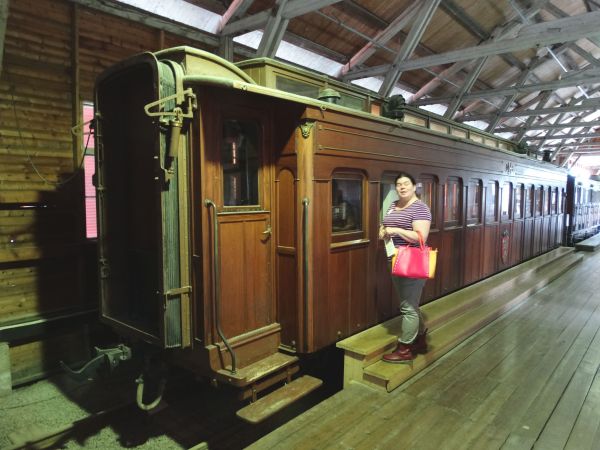
The king's own coach from Røros line dates back to 1876. It was built in USA and it was for 1067 mm narrow gauge,
often referred to as the "Kapspur" or Cape gauge. Train photographer Sanna Siissalo is acting as the queen here.
Picture from Hamar 1.7.2016 by Ilkka Siissalo.
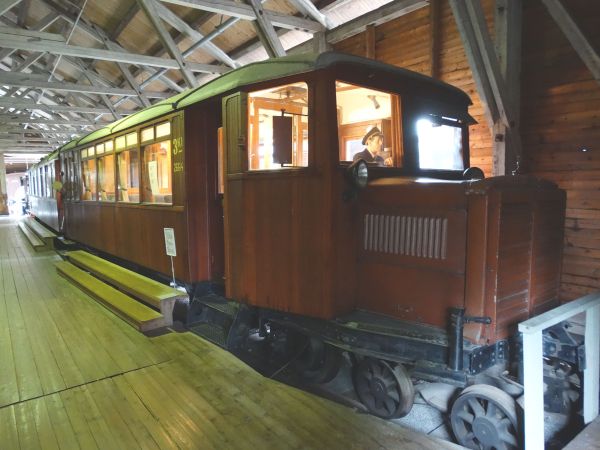
NSB's railcar / railbus of the class Cmb type 1 from 1930 was a Kapspur 1067 mm gauge railbus with a wooden frame.
It was used on the Setesdals railway and had a top speed of 55 km/h. There was space for 30 passengers.
Picture from Hamar 1.7.2016 by Ilkka Siissalo.
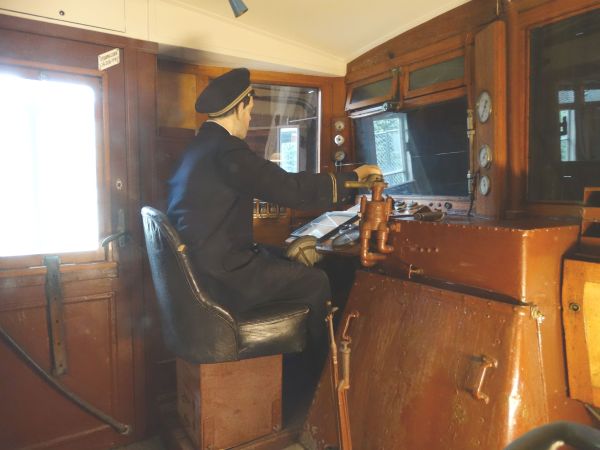
Driver's cab of the same class Cmb railbus as above.
Picture from Hamar 1.7.2016 by Ilkka Siissalo.
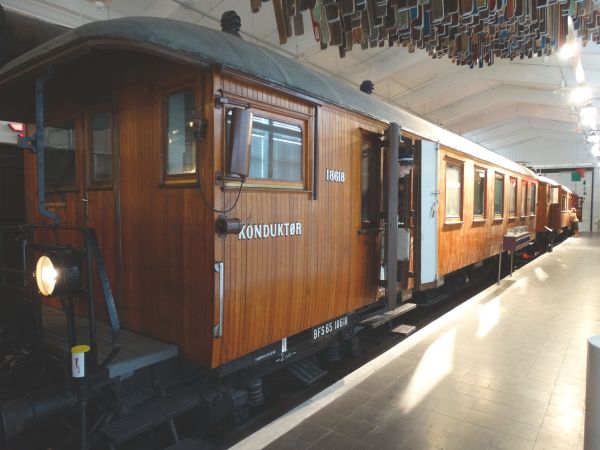
NSB's class BFS 65 was Norway's first electric motor wagon, built by Svenska Maskinverken in Sweden in 1921
for normal gauge traffic on the Drammenbanen line. In 1932 several of these wagons, including this one were
rebuilt to become steering wagons which could via cables remotely control a pushing motor wagon behind. This one was
in active use until 1983.
Picture from Hamar 1.7.2016 by Ilkka Siissalo.
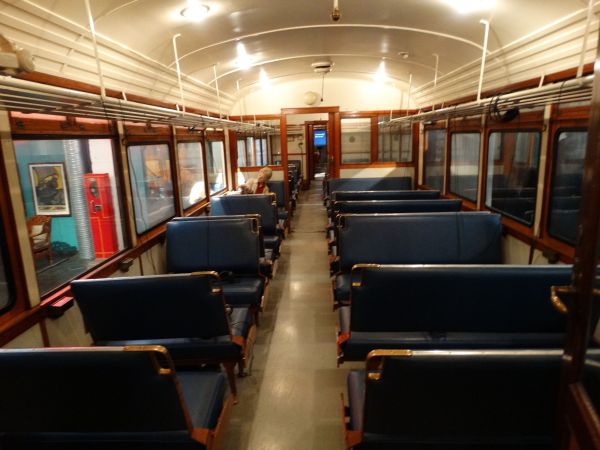
Inside view of the same NSB's class BFS 65 electric motor wagon / steering wagon from 1921.
Picture from Hamar 1.7.2016 by Ilkka Siissalo.
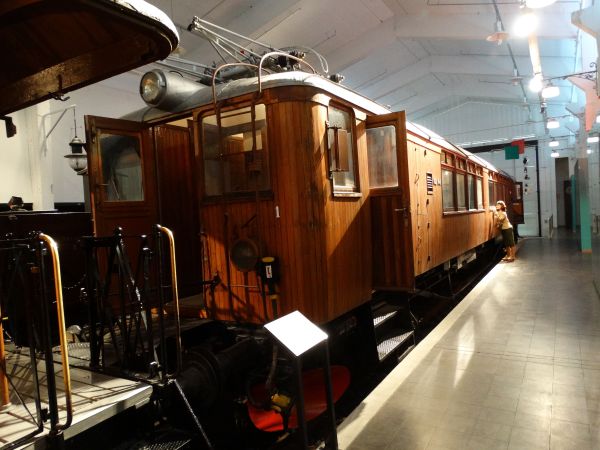
A wooden class 62 electric motor wagon from 1932.
Picture from Hamar 1.7.2016 by Ilkka Siissalo.

Another view of the same wooden class 62 electric motor wagon from 1932 as shown above.
Picture from Hamar 1.7.2016 by Ilkka Siissalo.

This is a car built by Armstrong & Whitworth in UK; their car no. 385. The car was imported into Norway by the
Automobil Compagniet A/S and sold to chamber lord Cappelen from Ulefoss. After a while Cappelen bought a newer car
and this one was returned to the car sales company, which this time sold it in 1924 to NSB. NSB modified it
to become a railcar for track inspection purposes.
Picture from Hamar 1.7.2016 by Ilkka Siissalo.
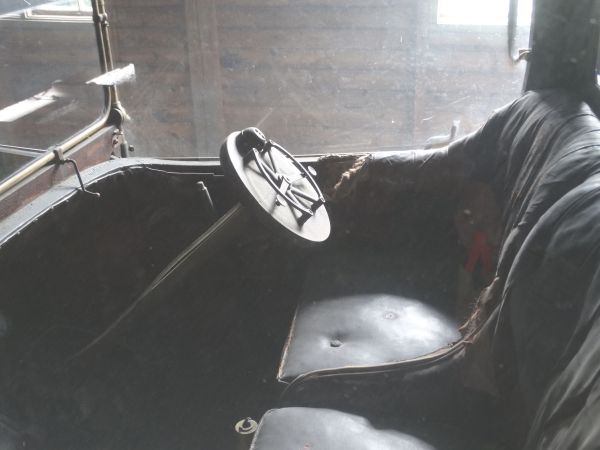
The driver's controls of the same class Cmb track inspection railcar as above.
Picture from Hamar 1.7.2016 by Ilkka Siissalo.
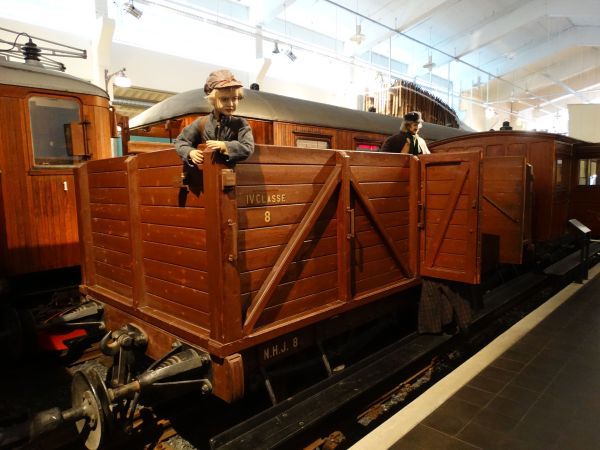
What was the difference between the 4th and the 3rd class in a passenger train? Right, 3rd class had a roof and wooden benches.
4th did not.
Picture from Hamar 1.7.2016 by Ilkka Siissalo.
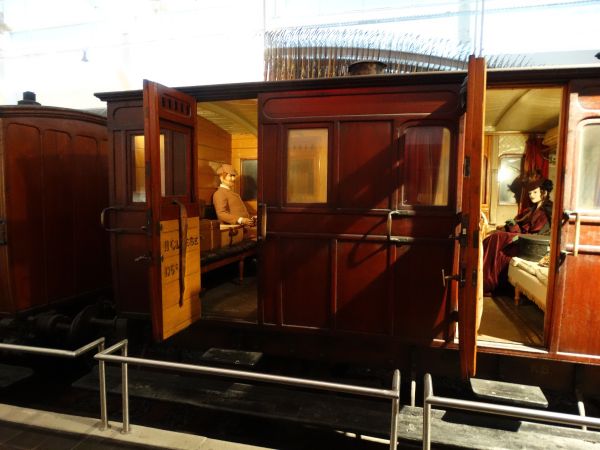
Second class was luxury for the rich. It had soft couches, separately for men and women. Women's departments might
even have curtains.
Picture from Hamar 1.7.2016 by Ilkka Siissalo.
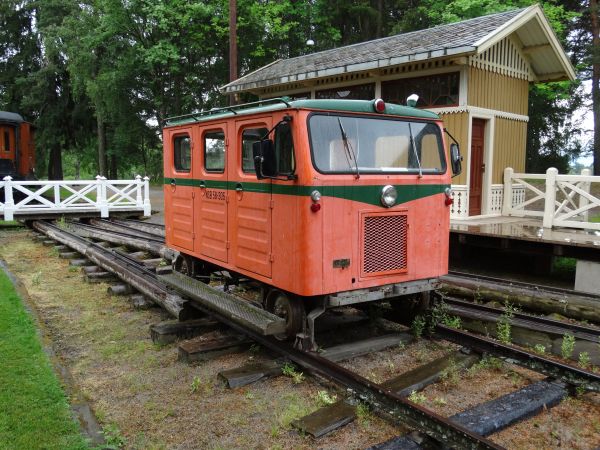
NSB's track inspection vehicle type KVAB no. 58-305 was built by Kalmar Verkstad AB in Sweden in 1961. It had a Volvo
car engine and a Volvo gearbox. There were only five of these in Norway, but a large number was in use in Sweden.
To see pictures of the same type in Swedish colours, please see our picture archive section Sweden -> miscellaneous.
Picture from Hamar 1.7.2016 by Ilkka Siissalo.

NSB's track inspection railcar 58-39.
Picture from Hamar 1.7.2016 by Ilkka Siissalo.
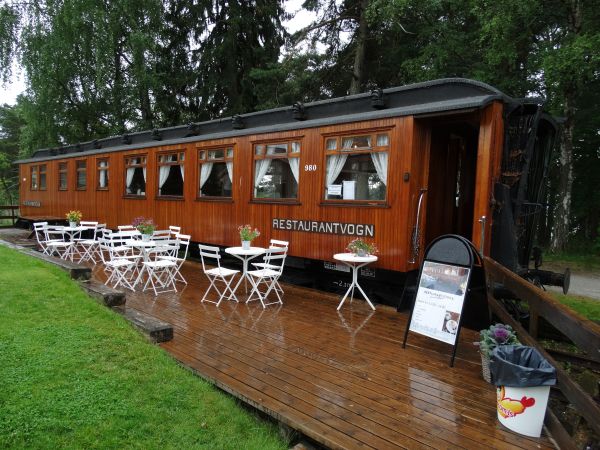
A 1930s express train dining coach made of teakwood acts as the museum's restaurant at the national railway museum.
Picture from Hamar 1.7.2016 by Ilkka Siissalo.
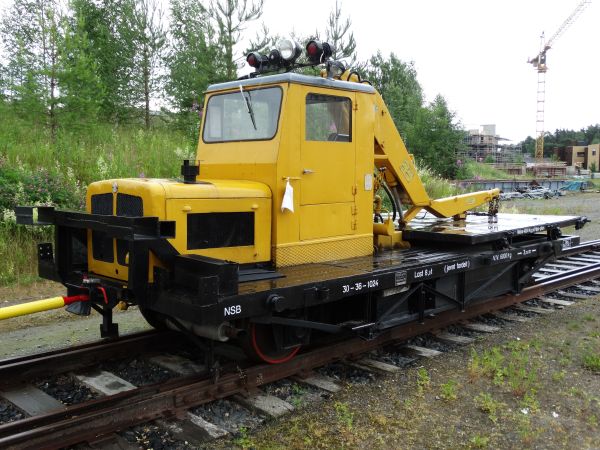
NSB's rail truck of the class Skd R 219 was built by Robel and was Robel's type 11. They were built 1960-65 and NSB
had 42 of them.
Picture from Hamar 1.7.2016 by Ilkka Siissalo.

